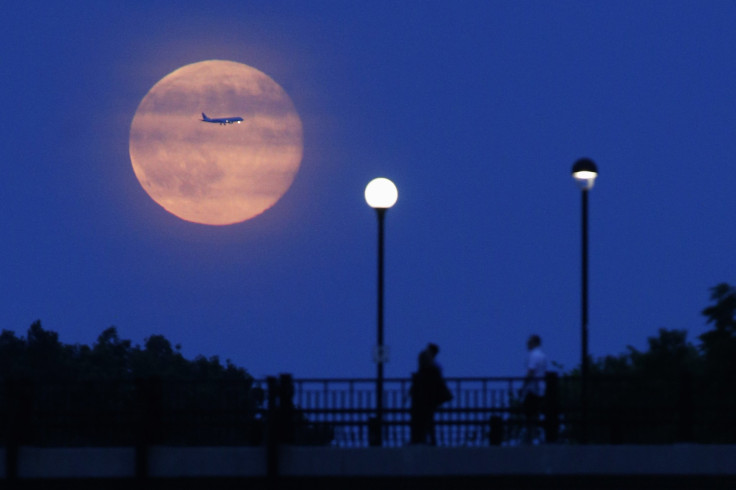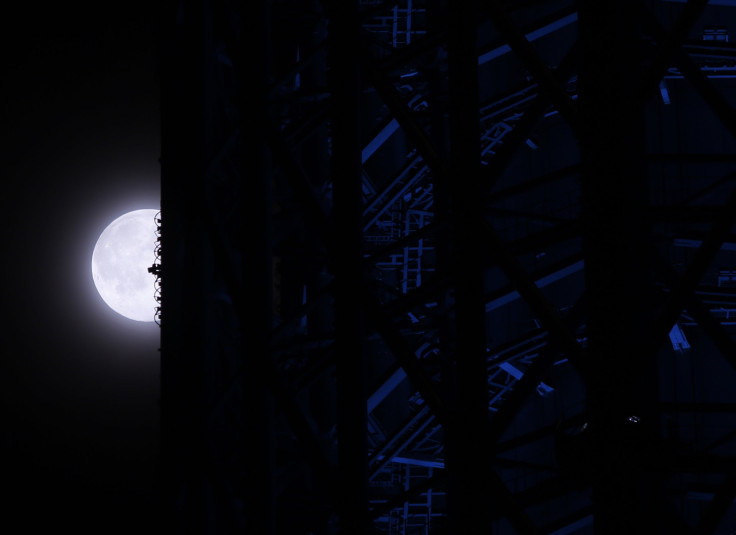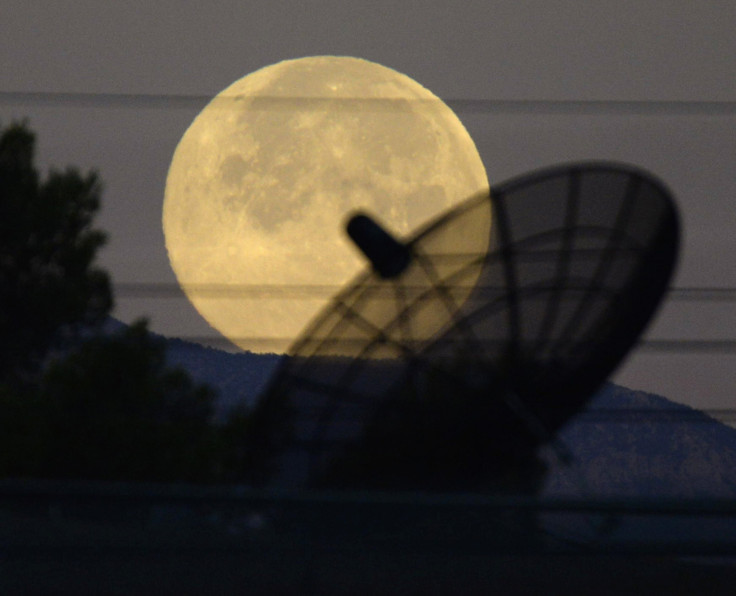Supermoon 2014 In Photos: First Of Three Summer Full Moons Does Not Disappoint

The first supermoon of 2014 put on quite a show for sky gazers Saturday. July's full moon was the first of three summer supermoons and viewers from around the world took the opportunity to get outside and look.
A supermoon is not a rare occurrence, nor is it a harbinger of doom. It occurs when the moon is at its closest point to Earth. The moon travels around the Earth in an elliptical orbit which means it has a closest point, the perigee, and a farthest point, the apogee. The perigee moon appears larger and brighter and Saturday's was around 220,000 miles away. At apogee, the moon is 252,657 miles from Earth. The full moon officially took place at 7:25 a.m. EDT but still appeared bright and large in the night sky on Saturday. NASA notes the moon can appear as much as 30 percent brighter and 14 percent larger.
Of course, not all supermoons are created equal and can vary in appearance based on when perigee occurs. The next supermoon will take place Aug. 10 and it will be the best full moon of the summer. The full moon falls within the hour the moon reaches perigee, which means an extra bright and large supermoon. The supermoon Sept. 9 will end the summer with another sky gazing event.
A full moon is seen rising over @OrbitalSciences Antares rocket ready to carry #Orb2 to the #ISS at 12:52pm ET Sunday pic.twitter.com/1UG4eGTkFe
— NASA (@NASA) July 13, 2014For those living in New York City, Saturday was a great day for astronomy. The last chance to see Manhattanhenge 2014, when the sun, in this case a half sun, lines up with the city's grid, occurred around 8:25 p.m. EDT and was followed by the first supermoon of the summer.
In addition to the supermoon, August will be a great month for sky gazers as the Perseid meteor shower will peak Aug. 12. The yearly Perseids are considered the best meteor shower of the year. More supermoon 2014 photos can be viewed below.



© Copyright IBTimes 2024. All rights reserved.






















